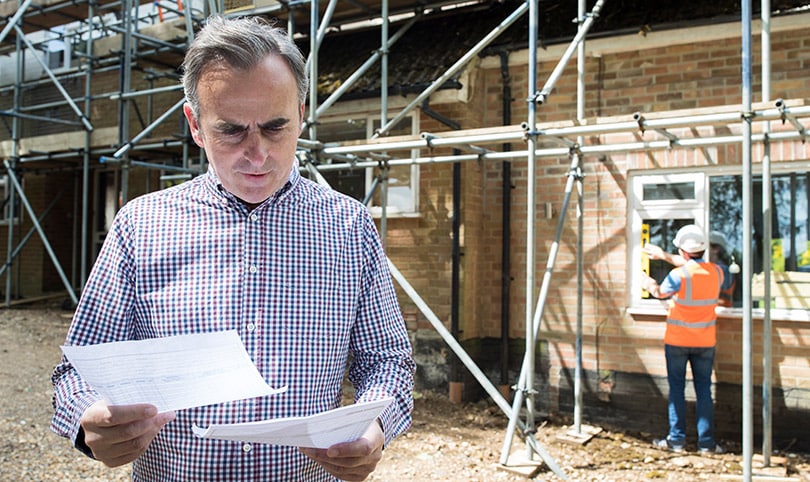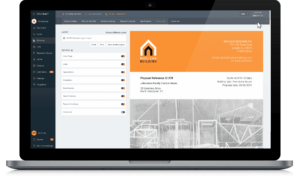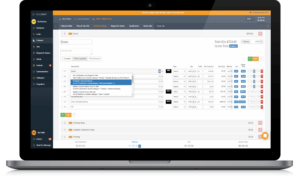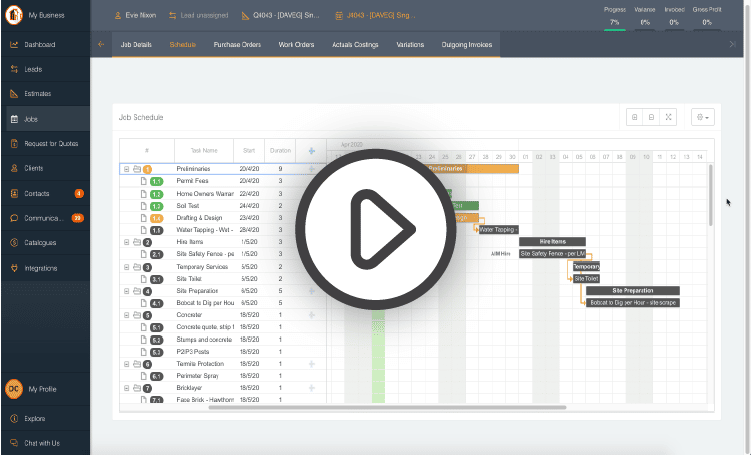The residential market represents one of the most dynamic economic sectors, facing up-and-down cycles in response to changing interest and mortgage rates. But the home construction industry is a bedrock of the national economy and offers a well-managed construction business a host of opportunities across both new home development and renovations.
Yes, the construction industry also faces many challenges, but savvy business owners can address them. Here’s how:
Manage a successful construction business by addressing risk
Understand that successfully managing a construction business means having a great business plan that takes a “best practices” approach to risk. This means both external risk factors (such as cash flow, scheduling and challenges with material suppliers and partner companies), and internal risk factors (such as staffing and safety risks).
It’s not a surprise—the better risks are managed, the healthier the construction business. But how do we get there?
Sound management minimizes external risk factors
Construction professionals share many of the same concerns as other business owners when it comes to external risks. That’s why it pays to adopt many of the same business practices that have proven successful in other industries.
Managing legal and financial risk
Construction firms face a multitude of risks, including delays to materials, workplace injuries, overdue invoices, and even the weather causing projects to spiral out of control in terms of time and costs. However, production delays are a common concern across many industries that require multiple streams of labor and materials.
There are specific strategies all business managers employ to avoid production delays, but fundamentally, managing these risks also means being covered by adequate insurance policies, making sure contracts have negotiation clauses, and having a plan in place for collecting invoices. Lien waivers are particularly important when managing a construction project.
Construction companies face common challenges, strategies
As that last year has shown us, with many construction companies running into financial difficulty, home builders face many profitability challenges. These include:
- Cost control—construction projects have so many variables that it can be difficult to control costs, which eats into the profit margin and hampers repeat business;
- Labor shortages—necessary skills for projects can be difficult to come by, and this can result in longer project timelines… or potentially prevent the company from successfully quoting work;
- Safety—home construction has inherent safety risks that can result in very high insurance premiums and potentially expose the company to expensive legal fees;
- Supply chain management—inflating costs and frequent unavailability of materials put home builders at an unprecedented level of risk from material suppliers working hard to fill in supply gaps;
- Contract management—managing contracts, including drafting, negotiation and enforcement, can be complex and time-consuming. It easily counts among the great “hidden” costs.
Best practices for managing a construction company
Let’s look how home construction companies counter some of the above trends:
Creating a Lead Generation System
Too often, a business owner falsely assumes basic marketing along with a website make up the total of what the business needs. Marketing is important, but without active lead generation backing it up, those marketing efforts often fall flat.
Lead generation should involve researching the architects, realtors, developers, property managers and designers who you want to work with, going to meet them, and asking to be added to their quote lists. That networking helps ensure that, when there’s an opportunity, you don’t miss a quote for a contract.
Delegating and leadership
Good leadership does not mean taking control and managing everything yourself. A good leader surrounds themselves with highly competent people they can trust and delegates work to their best employees. This means having a project manager and other key people to make decisions and approach the job site the way they know best, without micromanaging on your part.
Not only do you benefit from people bringing their own ideas to projects, but it frees you up to focus on the long-term future of the business itself.
Working efficiently with software
Software is a highly useful tool, when it’s applied correctly. By leveraging accounting, CRM, and estimating job management software with high-quality automation built in, you can save yourself a lot of “grunt work” each week, secure knowing that what is happening behind the scenes is seamless.
Software offers another benefit, when it’s properly implemented and managed, it also helps eliminate financial risk. How many construction companies have had a serious hit to their bottom line because an invoice was issued with the wrong (manual) calculations applied, resulting in an incorrect price? Software can vastly reduce this risk.
Construction management software
The construction industry needs unique software to help owners manage a project well. Good construction industry management software, such as Buildxact, generates estimates in a fraction of the time, manages leads, offers real-time material pricing, and builds an accurate contract and subcontractor schedule quickly. The software also connects with accounting software to better integrate your business’s finances and operations.
How to improve construction productivity
One of the keys to any successful construction business is how productively it operates. The more effective you are with your construction business, the more work you will see and the higher customer satisfaction you will earn. The momentum in your business builds upon itself.
There are several things construction management software does to boost productivity:
- Allows you to plan ahead, plan deeply and plan often. The more comprehensive your plans, at each stage of the construction process, the more likely your project completes without delays or setbacks. Software allows you to setup estimate and costing templates based on your most successful projects to speed planning;
- Communicate clearly and frequently. The better the lines of communication between each stakeholder, the less likely it is that misinformation will cause something to be done poorly or overlooked completely. Software moves scheduling online for all to see, no matter the time of day.
But software can be helpful in other ways too. For example, who doesn’t want to improve document management?. Eliminating the need to have paper records and storing all files in the cloud can make accessing them on-demand quicker.
How Buildxact can help
Ultimately, a successful construction business finds that success because the owner has made smart decisions when structuring their business. This means using the right tools to keep a close eye on performance while helping to both manage the business and pursue new opportunities.
The Buildxact software platform delivers these benefits. As a comprehensive tool for all aspects of construction management, Buildxact becomes a hub that the owner can use to manage each individual project and its costs, while also planning for the long-term health of the construction business.
Want to learn more? Buildxact offers an all-in-on platform that can help you achieve your goals. Learn more about affordable pricing. You also can book a demo or start right away with a no-hassle 14-day free trial.

















